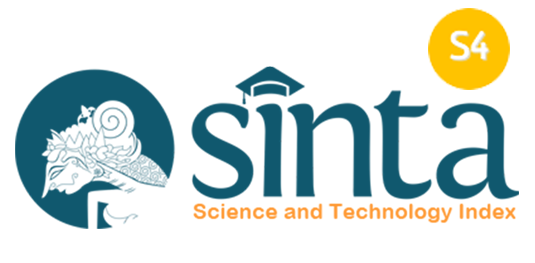Designing User Experience in BrandQu Application Using Design Thinking Method
Abstract
Based on user research, about 50% of marketers use influencer services to drive sales leads, and 40% focus on brand awareness. The aim of this study is to design the BrandQu application as an influencer marketing platform that offers solutions to MSMEs by applying the methodology of design thinking. The application of design thinking led to testing a high-fidelity prototype for potential users for two iterations. The results of usability tests show that the aspects of effectiveness and efficiency are in good interpretation and the UEQ questionnaire on the scale of clarity and efficiency did not meet the criteria of good quality. Then the Honeycomb UX indicator shows the sequence of variables that affect the user experience. The highest order of variables is desirable, credible, valuable, findable, usable, useful, and accessible. In this order, the low-accessibility variable is affected by prototype limitations that can only be accessed using third-party devices. Because there are still some aspects that have not met the good criteria and have received corrective feedback from users, iterations have been performed to optimize the user experience on the BrandQu application prototype. As for the results of the second iteration of the tests, there has been an increase in the aspects of effectiveness and efficiency that has achieved a very good interpretation. The UEQ questionnaire of the Attractiveness, Dependability, Stimulation, and Novelty scale achieved the Excellent criterion, while the Perspicuity and Efficiency scale achieved the Good criterion. Therefore, it can be concluded that the prototype of the BrandQu application provides a positive perception of user experience and usability.
Full Text:
PDFReferences
C. M. Annur, “Total Internet Users in Indonesia Early 2022,” Katadata Media, 2022.
IAB, “Inside Influence,” Why Publ. are decreasingly Turn. to Influ. Mark. what that means Mark. Insid. Influ. Influ. Mark. Publ. Guid., 2018.
D. Brown and N. Hayes, “Influencer Marketing,” Elsevier/Butterworth-Heinemann, 2008.
HubSpot and S.Social, “The Ultimate Guide Influencer Marketing,” 2018.
R. F. Dam and T. Y. Siang, “What's Design Allowing and Why Is It So Popular?,” Interaction Design Foundation, 2021.
B. Laugwitz, T. Held, and M. Schrepp, “Construction and Evaluation of UEQ,” Lect. Notes Comput. Sci., vol. 5298 LNCS, pp. 63–76, 2008.
D. Welsoko, “Peter Morville’s UX Honeycomb,” 2016.
P. Odell, “The Power of Influencers,” 2019.
A. Ponirah, “Influencer Marketing as a Marketing Strategy,” J. Econ. Stud., vol. 04, no. 01, pp. 11–16, 2020.
H. Cerrato, “The Meaning Of Colors,” Herman Cerrato Graph. Des., 2012.
R. F. Meuthia, Ferdawati, and Gustati, “User Experience Analysis in Village Applications Using Honeycomb UX Model,” J. Akunt. Keuang. dan Bisnis, vol. 14, pp. 342–351, 2021
DOI: http://dx.doi.org/10.24014/rmsi.v9i2.24873
Refbacks
- There are currently no refbacks.








